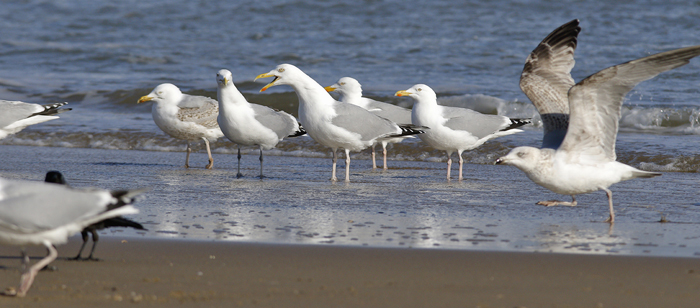 Herring Gull- Zilvermeeuw (argentatus & argenteus)
Herring Gull- Zilvermeeuw (argentatus & argenteus)
(last update: December 15, 2011
Herring Gull adults March
Introduction
This website deals with the Herring Gulls of the taxa argentatus and argenteus. Argenteus is an abundant breeding species on Iceland, Britain, NW France, Belgium, the Netherlands and N Germany. The taxon argentatus breeds in NE Europe, from Denmark, the coast of the Baltic Sea, Scandinavia and coast of the White Sea. In the centre of the breeding range (Denmark and the NW German coast), birds show intermediate characteristics, indicating there is a cline in argenteus-argentatus. Argenteus in Western Europe is pale-backed, slightly smaller and with relatively much black in the wing-tip; argentatus in the NE Europe is larger, slightly darker on upper-parts and show less black in the wing-tip.
Due to the large breeding range, there is much intra-specific variation in argentatus, with most large, powerful birds in the northern populations, showing the most darkest upper-parts, longest wing and most white in the outer-wing. In this region, some populations may hold substantial number of yellow-legged argentatus. (referred to as "Finnmark yellow-legged argentatus"). In adult plumage, the black sub-terminal spot on P5 is often lacking or strongly reduced to a diffuse streak, broken at the centre. Sometimes P6 lacks black as well.
In the Baltic region, other yellow-legged argentatus populations occur ("Baltic yellow-legged argentatus"), with adults showing even brighter yellow legs in summer and the upper-parts only slightly darker than West European argenteus, still much paler than Yellow-legged Gull (michahellis). Those Baltic argentatus often show a black sub-terminal spot on P5 in adult plumage.
On these web-pages, we largely follow P.J. Grant: "Gulls, a guide to identification" and E.K Barth's publication as Contribution No. 86, Zoological Museum, University of Oslo: "The circumpolar systematics of Larus argentatus and Larus fuscus with special reference to the Norwegian populations".
adult Herring Gulls - primary pattern
The differences between typical
western argenteus from the U.K. and northern Scandinavian argentatus is rather straightforward on primary pattern P5-P10. However, there
is a gradient and overlap in features of birds from populations in
northern Germany, Denmark and southern Norway.
Identification is even more challenging in birds from Baltic
populations, which show both characteristics of argenteus and argentatus, but sometimes also of the southern taxa michahellis and particularly cachinnans.
Adult birds from the western populations argenteus show more
black in the outer primaries, compared to northern argentatus.
In argenteus, P5 normally shows small black sub-terminal
markings, concentrated on the outer-web as a clear-cut black angular
spot and in some birds extending on the inner-web as a diffuse
streak. There may be some black on P4 as well, although this might
be a clue for near-adult birds. In argentatus, especially
from far northern Scandinavia, the black marking on P5 is completely
lacking or is very limited and diffuse.
Argenteus often has a black sub-terminal band on the top of P10,
dividing the tip from the mirror. If the black sub-terminal band on
P10 is broken, there is often still black on the inner and
outer-web's edge of P10. Normally argentatus lacks
sub-terminal markings on the outer-web of P10.
Baltic argentatus often have the black marking on P5 confined to the outer-web as a single rectangular small black square, with well-defined borders (not diffuse as in most Finnmark birds). In most Baltic birds, the white tip of P10 fully merges with the mirror, without a single sign of a sub-terminal band. The greyish-white 'tongue' on the inner-web is often broad and continues far down P10, almost creating a thayeri pattern on P10. The shape of the division line between greyish tongue and black outer-web can be an identification clue: In cachinnans this division line often makes a strong angular curve and has a smooth straight line, unlike the pattern of Herring Gulls, which often show a "saw-blade" motive or otherwise much irregularities along the division line. Sometimes wear of the outer primaries may be useful as a first indication of origin: An early moulting species as cachinnans on average show more abrasion in the feathers than later moulting argentatus.
Extensive research on the P10 pattern of Scandinavian argentatus was done for Norwegian birds by the Norwegian ornithologist Edvard Barth, and is presented in the table below.| Table 4 from E.K. Barth, The circumpolar systematics of Larus argentatus and Larus fuscus with special reference to the Norwegian populations, 1968. 200 Norwegian birds. (Notation converted to what we use in the texts, MM). | ||||||||||||||||||||
| locality | sample size | tip pattern P10 | tip pattern P9 | colour of P10 inner-web | black present from P10 to: | |||||||||||||||
| 1 | 2 | 3 | 4 | 1 | 2 | 3 | 4 | 5 | 1 | 2 | 3 | 5 | 6 | P7 | P6 | P5 | P4 | |||
| East Finnmark | 15 | n | 10 | 1 | 2 | 2 | 5 | 4 | 1 | 1 | 4 | 5 | 7 | 3 | 12 | 3 | - | 10 | 5 | - |
| % | 67 | 7 | 13 | 13 | 33 | 27 | 7 | 7 | 27 | 33 | 47 | 20 | 80 | 20 | - | 67 | 33 | - | ||
| Tamsöy in Central Finnmark | 33 | n | 17 | 7 | 6 | 3 | 10 | 10 | 6 | 0 | 7 | 12 | 20 | 1 | 23 | 10 | - | 19 | 13 | 1 |
| % | 52 | 21 | 18 | 9 | 30 | 30 | 18 | - | 21 | 36 | 61 | 3 | 70 | 30 | - | 58 | 39 | - | ||
| Troms | 29 | n | 17 | 8 | 3 | 1 | 11 | 9 | 4 | 1 | 4 | 3 | 20 | 6 | 24 | 5 | - | 24 | 5 | - |
| % | 59 | 28 | 10 | 3 | 38 | 31 | 14 | 3 | 14 | 10 | 69 | 21 | 83 | 17 | - | 83 | 17 | - | ||
| Bodö and Röst | 32 | n | 15 | 10 | 3 | 2 | 19 | 3 | 5 | 0 | 3 | 3 | 24 | 5 | 27 | 5 | 1 | 18 | 13 | - |
| % | 50 | 33 | 10 | 7 | 63 | 10 | 17 | - | 10 | 9 | 75 | 16 | 84 | 16 | 3 | 56 | 41 | - | ||
| Tarva | 20 | n | 8 | 7 | 3 | 2 | 11 | 5 | 4 | 0 | 0 | 10 | 8 | 2 | 12 | 8 | 1 | 7 | 10 | 2 |
| % | 40 | 35 | 15 | 10 | 55 | 25 | 20 | - | - | 50 | 40 | 10 | 60 | 40 | 5 | 35 | 50 | 10 | ||
| Stavanger and Lindesnes | 42 | n | 18 | 13 | 4 | 6 | 23 | 12 | 3 | 2 | 2 | 15 | 23 | 4 | 37 | 5 | - | 13 | 29 | - |
| % | 44 | 32 | 10 | 14 | 55 | 28 | 7 | 5 | 5 | 36 | 55 | 9 | 88 | 12 | - | 31 | 69 | - | ||
| Oslo Fiord | 29 | n | 19 | 6 | 3 | 1 | 20 | 1 | 4 | 1 | 2 | 12 | 14 | 3 | 24 | 5 | - | 17 | 12 | - |
| % | 66 | 21 | 10 | 3 | 71 | 4 | 14 | 4 | 7 | 42 | 48 | 10 | 83 | 17 | - | 59 | 41 | - | ||
| . | ||||||||||||||||||||
| 1:
all white 2: trace of black near tip 3: incomplete black bar near tip 4: complete black bar or black tip |
1:
broad white band over both webs 2: white spot on both webs 3: white spot on inner web only 4: no white spot present 5: 'thayeri-pattern' |
1:
like mantle colour 2: slightly lighter than mantle colour 3: markedly lighter than mantle colour 5: relatively sharp border between black and grey 6: gradual transition from black to grey |
||||||||||||||||||
Especially birds from north Scandinavian Finnmark may show the characteristic 'thayeri' pattern in the outer primaries P9 and P10 (column 5 of tip pattern P9 in the table). This pattern is named after the Thayer's Gull, which often shows a particular pattern in the outer primaries: the mirror and the white tip merge and are connected to the pale inner-web (see this image). In other words: the black medial band of the outer-web doesn't fully reach the edge of the inner-web and there is no sub-terminal band. In Thayer's Gull this pattern may be very obvious and, together with the 'string of pearls' may be indicative for identification.
Primary moult timing and strategy
By October the majority of adult Lesser Black-backed Gulls moulting the outer primaries. There is a clear difference between presumed birds lingering around and birds which will probably migrate further south quickly. The difference can be found in the primary moult strategy.
Some adult have a large moulting gap in the central primaries (for example P8-P10 old and only P4 fully grown and P5 still slightly shorter than P4) by the first days of September. It is hard to believe these birds will travel large distances non-stop as such moult gaps are highly inefficient for this migration pattern. Probably these birds, which can be found moulting in a period roughly from late August to late November stay in the area throughout their primary moult. They migrate further south either forced by cold winter or when the primaries moult arrives at the far outer primaries.
The other group is represented by birds with a very small moult gap in the primaries or with a very low primary moult score, indicating that primary moult will probably suspended until arrival at the wintering grounds.
Tables & Graph
remaining SPRING
|
|
|
|
|
|
|
|
starting date:
|
30 Apr
|
07 May
|
14 May
|
21 May
|
04 Jun
|
11 Jun
|
30 Jul
|
week no:
|
18
|
19
|
20
|
21
|
23
|
24
|
31
|
0
|
0
|
0
|
0
|
0
|
|
|
0
|
1
|
0
|
0
|
0
|
0
|
|
|
0
|
2
|
0
|
0
|
0
|
0
|
|
|
1
|
3
|
0
|
0
|
0
|
0
|
|
|
1
|
4
|
0
|
0
|
0
|
0
|
|
|
37
|
5
|
0
|
0
|
0
|
0
|
|
|
22
|
6
|
0
|
0
|
0
|
0
|
|
|
3
|
7
|
3
|
2
|
1
|
2
|
|
|
0
|
8
|
16
|
22
|
26
|
18
|
1
|
1
|
0
|
9
|
30
|
13
|
16
|
10
|
1
|
|
0
|
10
|
66
|
33
|
37
|
10
|
|
|
0
|
|
|
|
|
|
|
|
|
n=
|
115
|
70
|
80
|
40
|
2
|
1
|
64
|
average REM P:
|
9.4
|
9.1
|
9.1
|
8.7
|
8.5
|
8.0
|
4.4
|
95% CID =
|
0.15
|
0.23
|
0.20
|
0.29
|
6.35
|
|
0.17
|
inverse =
|
1.98
|
1.99
|
1.99
|
2.02
|
12.71
|
|
2.00
|
Variantie (s2) =
|
0.68
|
0.90
|
0.84
|
0.83
|
0.50
|
|
0.46
|
SD (s) =
|
0.82
|
0.95
|
0.91
|
0.91
|
0.71
|
|
0.68
|
SE (sx) =
|
0.08
|
0.11
|
0.10
|
0.14
|
0.50
|
|
0.09
|
|
|
|
|
|
|
|
|
% class:
|
|
|
|
|
|
|
|
0
|
0
|
0
|
0
|
0
|
0
|
0
|
0
|
1
|
0
|
0
|
0
|
0
|
0
|
0
|
0
|
2
|
0
|
0
|
0
|
0
|
0
|
0
|
2
|
3
|
0
|
0
|
0
|
0
|
0
|
0
|
2
|
4
|
0
|
0
|
0
|
0
|
0
|
0
|
58
|
5
|
0
|
0
|
0
|
0
|
0
|
0
|
34
|
6
|
0
|
0
|
0
|
0
|
0
|
0
|
5
|
7
|
3
|
3
|
1
|
5
|
0
|
0
|
0
|
8
|
14
|
31
|
33
|
45
|
50
|
100
|
0
|
9
|
26
|
19
|
20
|
25
|
50
|
0
|
0
|
10
|
57
|
47
|
46
|
25
|
0
|
0
|
0
|
|
|
|
|
|
|
|
|
% control:
|
100
|
100
|
100
|
100
|
100
|
100
|
100
|
0 = 0 old primaries left (P10 dropped); 10 = all 10 primaries still old and present.

Above: Scatter Plot for PMS in adult Herring Gulls. Number of remaining old primaries throughout the year. Sample size is 1.329 birds.
new: SPRING |
|
|
|
|
starting date:
|
30 Apr
|
07 May
|
14 May
|
21 May
|
week no:
|
18
|
19
|
20
|
21
|
0
|
104
|
60
|
66
|
30
|
1
|
7
|
9
|
12
|
7
|
2
|
4
|
1
|
2
|
3
|
3
|
0
|
0
|
0
|
0
|
4
|
0
|
0
|
0
|
0
|
5
|
0
|
0
|
0
|
0
|
6
|
0
|
0
|
0
|
0
|
7
|
0
|
0
|
0
|
0
|
8
|
0
|
0
|
0
|
0
|
9
|
0
|
0
|
0
|
0
|
10
|
0
|
0
|
0
|
0
|
|
|
|
|
|
n=
|
115
|
70
|
80
|
40
|
average NEW P:
|
0.1
|
0.2
|
0.2
|
0.3
|
95% CID =
|
0.08
|
0.10
|
0.10
|
0.20
|
inverse =
|
1.98
|
1.99
|
1.99
|
2.02
|
Variantie (s2) =
|
0.18
|
0.16
|
0.21
|
0.38
|
SD (s) =
|
0.43
|
0.40
|
0.46
|
0.62
|
SE (sx) =
|
0.04
|
0.05
|
0.05
|
0.10
|
|
|
|
|
|
% class:
|
|
|
|
|
0
|
90
|
86
|
83
|
75
|
1
|
6
|
13
|
15
|
18
|
2
|
3
|
1
|
3
|
8
|
3
|
0
|
0
|
0
|
0
|
4
|
0
|
0
|
0
|
0
|
5
|
0
|
0
|
0
|
0
|
6
|
0
|
0
|
0
|
0
|
7
|
0
|
0
|
0
|
0
|
8
|
0
|
0
|
0
|
0
|
9
|
0
|
0
|
0
|
0
|
10
|
0
|
0
|
0
|
0
|
|
|
|
|
|
% control:
|
100
|
100
|
100
|
100
|
0 = no new primaries visible. So either P1 still old, or P1 dropped, but the very tip still not visible.
1 = P1 longest new primary. Range between "at least the tip of P1 is visible" until "tip of P2 still shorter than P1".
2 = P2 longest new primary. 3 = etc.

Above: Scatter Plot for PMS in adult Herring Gulls throughout the year. Longest new primary is classified "fully grown". Sample size is 3.271 birds. Birds scored on NEW primaries.
The first date in our analysis on adult Herring Gulls is 02 May 2006 (week 18 - starting 30 April), on which we already found birds with missing primaries (some birds had already shed 3 primaries). This group of actively moulting birds, 43% of the sample, must have started the complete moult somewhere around mid-April and probably several birds may have started earlier.
The last scoring day has been 03 December, when still 20% of the sampled birds had to grow P10. The final stage of the complete moult for all birds has to be somewhere after mid-December. On 03 December we scored 59 birds with P10 fully grown, 13 birds with P9 fully grown and 2 birds with P8 fully grown. They all had no old primaries left.
The first time a new primary (P1) was visible, was also on 02 May 2006 (week 18 - starting 30 April). In this week, 90% of the sample did not show new primaries, but 9% did. Four birds in the sample of 115 birds alreday had P2 as longest primary (fully grown). As soon as the tip of P1 was visible, this was automatically scored "fully grown", and this was the case in 7 birds. For the other primaries to be scored fully grown, they had to exceed the previous primary in length (so P2 fully grown, only from when it is longer than P1).
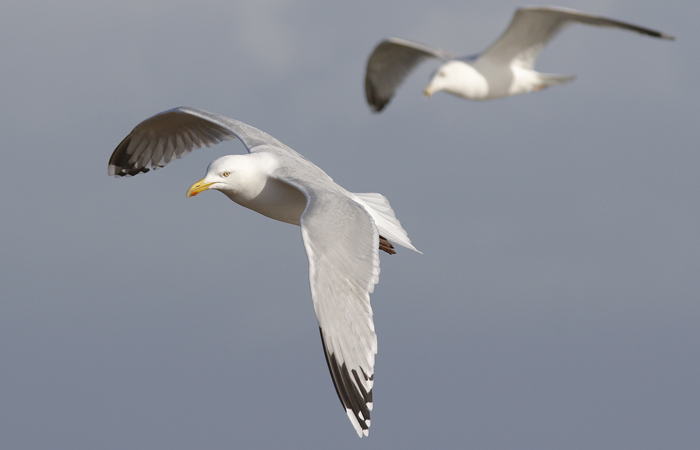
LINEAR REGRESSION
Onset of primary moult can best be illustrated by a sinusoid for the first few weeks and last weeks, but there appears to be linear dependency over much of the central moult period.
LINEAR REGRESSION FOR OLD REMAINING PRIMARIES
Complete sample: Linear regression (n = 1329, R2= 0.935, sign: P<0,000)
PMS = -0,379* WEEK + 16,324.
LINEAR REGRESSION FOR NEW FULLY GROWN PRIMARIES
Complete sample: Linear regression (n = 3271 R2= 0.927, sign: P<0,000)
PMS = 0,322* WEEK - 6,071.
below: some adult Herring Gulls in March.
 |
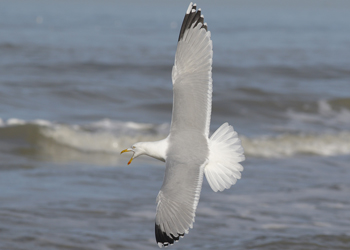 |
 |
|
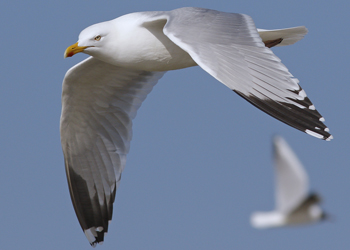 |
|
 |
 Herring Gull argenteus BTO GC89751 adult, March 2015, Scheveningen Haven, the Netherlands. Picture: Merijn Loeve.
Herring Gull argenteus BTO GC89751 adult, March 2015, Scheveningen Haven, the Netherlands. Picture: Merijn Loeve.  Herring
Gull DA196843 16cy (argenteus), March 27 2011, Boulogne/Mer, France. Picture: J-M Sauvage.
Herring
Gull DA196843 16cy (argenteus), March 27 2011, Boulogne/Mer, France. Picture: J-M Sauvage. Herring
Gull DA208394 17+cy (argenteus), March 31 2012, Boulogne-sur-Mer, NW France. Picture: Jean-Michel Sauvage.
Herring
Gull DA208394 17+cy (argenteus), March 31 2012, Boulogne-sur-Mer, NW France. Picture: Jean-Michel Sauvage. Herring
Gull EA594518 adult (argenteus), June 2011 & March 2014, Boulogne/Mer, France. Picture: J-M Sauvage.
Herring
Gull EA594518 adult (argenteus), June 2011 & March 2014, Boulogne/Mer, France. Picture: J-M Sauvage. Herring Gull
(argenteus) 6CY-8CY CKAL March 2013 & May 2015, Calais, NW France. Picture: Jean-Michel Sauvage.
Herring Gull
(argenteus) 6CY-8CY CKAL March 2013 & May 2015, Calais, NW France. Picture: Jean-Michel Sauvage. Herring Gull (argenteus) FXAP 5CY (4th cycle), March 10 2011, Blaringhem, France. Picture: Harry J.P. Vercruijsse.
Herring Gull (argenteus) FXAP 5CY (4th cycle), March 10 2011, Blaringhem, France. Picture: Harry J.P. Vercruijsse.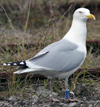 Herring
Gull GDAV 5-6cy (argenteus), March 2011 & April 2012, Boulogne/Mer, France. Picture: J-M Sauvage.
Herring
Gull GDAV 5-6cy (argenteus), March 2011 & April 2012, Boulogne/Mer, France. Picture: J-M Sauvage. Herring
Gull (argenteus) 15CY KTAF March 30 2013, Calais, NW France. Picture: Jean-Michel Sauvage.
Herring
Gull (argenteus) 15CY KTAF March 30 2013, Calais, NW France. Picture: Jean-Michel Sauvage. Herring
Gull H128166 10cy (argenteus), March 2011 & 2012, Boulogne/Mer, France. Picture: J-M Sauvage.
Herring
Gull H128166 10cy (argenteus), March 2011 & 2012, Boulogne/Mer, France. Picture: J-M Sauvage. Herring
Gull Y.AFL adult (argenteus), March 2010 & September 2011, IJmuiden, the Netherlands.
Herring
Gull Y.AFL adult (argenteus), March 2010 & September 2011, IJmuiden, the Netherlands. Herring
Gull Y.AHA adult (argenteus), March 04 2011, IJmuiden, the Netherlands.
Herring
Gull Y.AHA adult (argenteus), March 04 2011, IJmuiden, the Netherlands. Herring
Gull Y.AHB adult (argenteus), 2010 - 2011, IJmuiden, the Netherlands.
Herring
Gull Y.AHB adult (argenteus), 2010 - 2011, IJmuiden, the Netherlands. Herring
Gull Y.AJP 23cy (argenteus), 2002 - 2010, IJmuiden, the Netherlands. Formerly J=, now partner of Y.AHB.
Herring
Gull Y.AJP 23cy (argenteus), 2002 - 2010, IJmuiden, the Netherlands. Formerly J=, now partner of Y.AHB. Herring
Gull Y.AKS adult argenteus), 2009 - 2010, IJmuiden, the Netherlands.
Herring
Gull Y.AKS adult argenteus), 2009 - 2010, IJmuiden, the Netherlands. Herring Gull (argenteus) adult YBAN March 30 2013, Voorhout, the Netherlands.
Herring Gull (argenteus) adult YBAN March 30 2013, Voorhout, the Netherlands.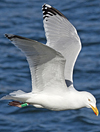 Herring Gull
(argenteus) YBAX adult, April 2015 - March 2016, IJmuiden, the Netherlands.
Herring Gull
(argenteus) YBAX adult, April 2015 - March 2016, IJmuiden, the Netherlands. 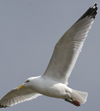 Herring Gull (argenteus) adult YBBH March 30 2013, Voorhout, the Netherlands.
Herring Gull (argenteus) adult YBBH March 30 2013, Voorhout, the Netherlands. Herring
Gull KNAT 8+cy (argenteus), 2010-2011, Leiden, the Netherlands.
Herring
Gull KNAT 8+cy (argenteus), 2010-2011, Leiden, the Netherlands. hybrid argenteus x michahellis PA 11cy,March 10 2007, Neeltje Jans, the Netherlands.
hybrid argenteus x michahellis PA 11cy,March 10 2007, Neeltje Jans, the Netherlands.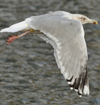 Herring Gull
(argenteus) UT 7CY, January - August 2014, Dordrecht, the Netherlands. Picture: Theo Muusse & Merijn Loeve.
Herring Gull
(argenteus) UT 7CY, January - August 2014, Dordrecht, the Netherlands. Picture: Theo Muusse & Merijn Loeve. Herring
Gull P8 (argenteus), February-March 2008, Dordrecht, the Netherlands.
Herring
Gull P8 (argenteus), February-March 2008, Dordrecht, the Netherlands. Herring Gull (argenteus) T.R 4CY-7CY, April 2016, May-June 2017 & March 2019, Katwijk, the Netherlands.
Herring Gull (argenteus) T.R 4CY-7CY, April 2016, May-June 2017 & March 2019, Katwijk, the Netherlands.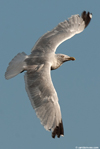 Herring
Gull DA 24-27cy (argenteus, 2009-2010, Leiden, Netherlands.
Herring
Gull DA 24-27cy (argenteus, 2009-2010, Leiden, Netherlands. Herring
Gull E261 adult (argenteus), March 13 2010, Leiden, the Netherlands. Picture: Maarten van Kleinwee.
Herring
Gull E261 adult (argenteus), March 13 2010, Leiden, the Netherlands. Picture: Maarten van Kleinwee. Herring
Gull NLA.5.352.700 12cy (argenteus), March 2012, Scheveningen, the Netherlands.
Herring
Gull NLA.5.352.700 12cy (argenteus), March 2012, Scheveningen, the Netherlands. Herring
Gull NLA.5.352.764 9cy (argenteus), March 2010 & 2011, IJmuiden, the Netherlands.
Herring
Gull NLA.5.352.764 9cy (argenteus), March 2010 & 2011, IJmuiden, the Netherlands. Herring
Gull 5.359.457 adult (argenteus), March 18 2002, Missouriweg, Maasvlakte, the Netherlands (51.59N 04.02E). Ringed February 01 2002 at
Westduinen, Den Haag as near-adult (at least older than 3cy).
Herring
Gull 5.359.457 adult (argenteus), March 18 2002, Missouriweg, Maasvlakte, the Netherlands (51.59N 04.02E). Ringed February 01 2002 at
Westduinen, Den Haag as near-adult (at least older than 3cy). Herring
Gull 5.366.547 5cy (argenteus), March 29 2004, Westkapelle, the
Netherlands (51.33N 03.25E). Picture Pim Wolf.
Herring
Gull 5.366.547 5cy (argenteus), March 29 2004, Westkapelle, the
Netherlands (51.33N 03.25E). Picture Pim Wolf. Herring
Gull NLA.5.413.555 7cy (argenteus), March 04 2011, IJmuiden, the Netherlands.
Herring
Gull NLA.5.413.555 7cy (argenteus), March 04 2011, IJmuiden, the Netherlands. Herring
Gull NLA.5.414.557 adult (argenteus), March 13 2010, Leiden, the Netherlands. Picture: Maarten van Kleinwee.
Herring
Gull NLA.5.414.557 adult (argenteus), March 13 2010, Leiden, the Netherlands. Picture: Maarten van Kleinwee. Herring
Gull NLA.5.419.235 5cy (argenteus), March 27 2010, Leiden, the Netherlands. Picture: Maarten van Kleinwee.
Herring
Gull NLA.5.419.235 5cy (argenteus), March 27 2010, Leiden, the Netherlands. Picture: Maarten van Kleinwee. Herring
Gull argenteus 6.125.871 5CY & 8CY, August 2012 & March 2015, IJmuiden, the Netherlands.
Herring
Gull argenteus 6.125.871 5CY & 8CY, August 2012 & March 2015, IJmuiden, the Netherlands. Herring Gull argenteus NLA 6.168.143 8CY-9CY, February 2018 & March 2019, Katwijk, the Netherlands.
Herring Gull argenteus NLA 6.168.143 8CY-9CY, February 2018 & March 2019, Katwijk, the Netherlands..jpg) Herring Gull (argentatus) J5858 adult, March 04 2015, Hovindam - Oslo, Norway. Picture: John Sandøy.
Herring Gull (argentatus) J5858 adult, March 04 2015, Hovindam - Oslo, Norway. Picture: John Sandøy. Herring Gull (argentatus) LIK EN03.615 & 9L5B sub-adult (5CY), March 08 2015, Jakuševec landfill, Zagreb, Croatia. Picture: ringing team Luka Jurinovic.
Herring Gull (argentatus) LIK EN03.615 & 9L5B sub-adult (5CY), March 08 2015, Jakuševec landfill, Zagreb, Croatia. Picture: ringing team Luka Jurinovic. Herring Gull argentatus 9L9B adult, March 18 2014, Zabieliškis - Kaunas, Lithuania. Picture: Boris Belchev.
Herring Gull argentatus 9L9B adult, March 18 2014, Zabieliškis - Kaunas, Lithuania. Picture: Boris Belchev. Herring Gull argentatus KF01 7CY, March 09 2016, Den Haag, the Netherlands. Picture: Merijn Loeve.
Herring Gull argentatus KF01 7CY, March 09 2016, Den Haag, the Netherlands. Picture: Merijn Loeve. Herring Gull argentatus KH89 January - September 2010, October 2011 & March 2015, the Netherlands & France.
Herring Gull argentatus KH89 January - September 2010, October 2011 & March 2015, the Netherlands & France.
 Herring Gull (argentatus) RUM C-730262 6CY-7CY, January - February 2018 & March 2019, Katwijk, the Netherlands.
Herring Gull (argentatus) RUM C-730262 6CY-7CY, January - February 2018 & March 2019, Katwijk, the Netherlands.  Herring
Gull hybride (argentatus), March 19 2010, IJmuiden, the Netherlands.
Herring
Gull hybride (argentatus), March 19 2010, IJmuiden, the Netherlands. Herring Gull (argentatus) adult, March 10 2014, Katwijk, the Netherlands.
Herring Gull (argentatus) adult, March 10 2014, Katwijk, the Netherlands. Herring Gull (argentatus) adult, March 10 2014, Katwijk, the Netherlands.
Herring Gull (argentatus) adult, March 10 2014, Katwijk, the Netherlands. Herring Gull (argentatus) adult, March 05 2014, Katwijk, the Netherlands.
Herring Gull (argentatus) adult, March 05 2014, Katwijk, the Netherlands.  Herring Gull (argentatus) adult, March 30 2013, Voorhout, the Netherlands.
Herring Gull (argentatus) adult, March 30 2013, Voorhout, the Netherlands.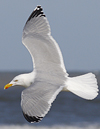 Herring Gull adult, March 30 2016, Katwijk, the Netherlands.
Herring Gull adult, March 30 2016, Katwijk, the Netherlands. Herring Gull adult, March 30 2016, Katwijk, the Netherlands.
Herring Gull adult, March 30 2016, Katwijk, the Netherlands. Herring Gull adult, March 30 2016, Katwijk, the Netherlands.
Herring Gull adult, March 30 2016, Katwijk, the Netherlands.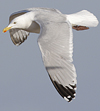 Herring Gull adult, March 30 2016, Katwijk, the Netherlands.
Herring Gull adult, March 30 2016, Katwijk, the Netherlands. Herring Gull adult, March 30 2016, Katwijk, the Netherlands.
Herring Gull adult, March 30 2016, Katwijk, the Netherlands.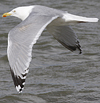 Herring Gull adult, March 30 2016, Katwijk, the Netherlands.
Herring Gull adult, March 30 2016, Katwijk, the Netherlands. Herring Gull adult, March 30 2016, Katwijk, the Netherlands.
Herring Gull adult, March 30 2016, Katwijk, the Netherlands. Herring Gull adult, March 30 2016, Katwijk, the Netherlands.
Herring Gull adult, March 30 2016, Katwijk, the Netherlands. Herring Gull adult, March 30 2016, Katwijk, the Netherlands.
Herring Gull adult, March 30 2016, Katwijk, the Netherlands. Herring Gull adult, March 30 2016, Katwijk, the Netherlands.
Herring Gull adult, March 30 2016, Katwijk, the Netherlands. Herring Gull adult, March 30 2016, Katwijk, the Netherlands.
Herring Gull adult, March 30 2016, Katwijk, the Netherlands. Herring Gull adult, March 30 2016, Katwijk, the Netherlands.
Herring Gull adult, March 30 2016, Katwijk, the Netherlands.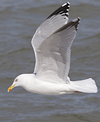 Herring Gull adult, March 30 2016, Katwijk, the Netherlands.
Herring Gull adult, March 30 2016, Katwijk, the Netherlands. Herring Gull adult, March 30 2016, Katwijk, the Netherlands.
Herring Gull adult, March 30 2016, Katwijk, the Netherlands. Herring Gull adult, March 30 2016, Katwijk, the Netherlands.
Herring Gull adult, March 30 2016, Katwijk, the Netherlands. Herring Gull adult, March 30 2016, Katwijk, the Netherlands.
Herring Gull adult, March 30 2016, Katwijk, the Netherlands. Herring Gull adult, March 05 2014, Katwijk, the Netherlands.
Herring Gull adult, March 05 2014, Katwijk, the Netherlands. Herring Gull 5CY, March 10 2014, Katwijk, the Netherlands. No mirror on P10.
Herring Gull 5CY, March 10 2014, Katwijk, the Netherlands. No mirror on P10. 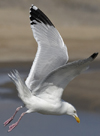 Herring Gull adult, March 21 2013, Noordwijk, the Netherlands.
Herring Gull adult, March 21 2013, Noordwijk, the Netherlands. Herring Gull adult, March 21 2013, Noordwijk, the Netherlands.
Herring Gull adult, March 21 2013, Noordwijk, the Netherlands.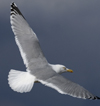 Herring Gull adult, March 21 2013, Noordwijk, the Netherlands.
Herring Gull adult, March 21 2013, Noordwijk, the Netherlands. Herring Gull adult, March 21 2013, Noordwijk, the Netherlands.
Herring Gull adult, March 21 2013, Noordwijk, the Netherlands.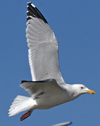 Herring Gull adult, March 13 2013, Noordwijk, the Netherlands.
Herring Gull adult, March 13 2013, Noordwijk, the Netherlands.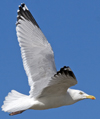 Herring Gull adult, March 13 2013, Noordwijk, the Netherlands.
Herring Gull adult, March 13 2013, Noordwijk, the Netherlands. Herring Gull adult, March 13 2013, Noordwijk, the Netherlands.
Herring Gull adult, March 13 2013, Noordwijk, the Netherlands. Herring Gull adult, March 13 2013, Noordwijk, the Netherlands.
Herring Gull adult, March 13 2013, Noordwijk, the Netherlands.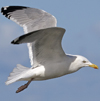 Herring Gull adult, March 13 2013, Noordwijk, the Netherlands.
Herring Gull adult, March 13 2013, Noordwijk, the Netherlands. Herring Gull adult, March 13 2013, Noordwijk, the Netherlands.
Herring Gull adult, March 13 2013, Noordwijk, the Netherlands. Herring Gull adult, March 13 2013, Noordwijk, the Netherlands.
Herring Gull adult, March 13 2013, Noordwijk, the Netherlands. Herring Gull adult, March 13 2013, Noordwijk, the Netherlands.
Herring Gull adult, March 13 2013, Noordwijk, the Netherlands.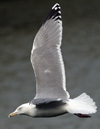 Herring
Gull near-adult / 5cy, March 09 2012, Scheveningen, the Netherlands.
Herring
Gull near-adult / 5cy, March 09 2012, Scheveningen, the Netherlands. Herring Gull adult, March 01 2014, Katwijk, the Netherlands.
Herring Gull adult, March 01 2014, Katwijk, the Netherlands.  Herring Gull adult, March 01 2014, Katwijk, the Netherlands.
Herring Gull adult, March 01 2014, Katwijk, the Netherlands.  Herring
Gull adult (argenteus), March 16
2003, Boulogne/Mer, France (50.42
N,1.34E).
Illustrative example for NW French birds.
Herring
Gull adult (argenteus), March 16
2003, Boulogne/Mer, France (50.42
N,1.34E).
Illustrative example for NW French birds. Herring
Gull adult (argenteus), March 17
2003, Boulogne/Mer, France (50.42N
01.34E).
Herring
Gull adult (argenteus), March 17
2003, Boulogne/Mer, France (50.42N
01.34E). Herring
Gull adult (argenteus), March 17
2003, Boulogne/Mer, France (50.42N
01.34E).
Herring
Gull adult (argenteus), March 17
2003, Boulogne/Mer, France (50.42N
01.34E).